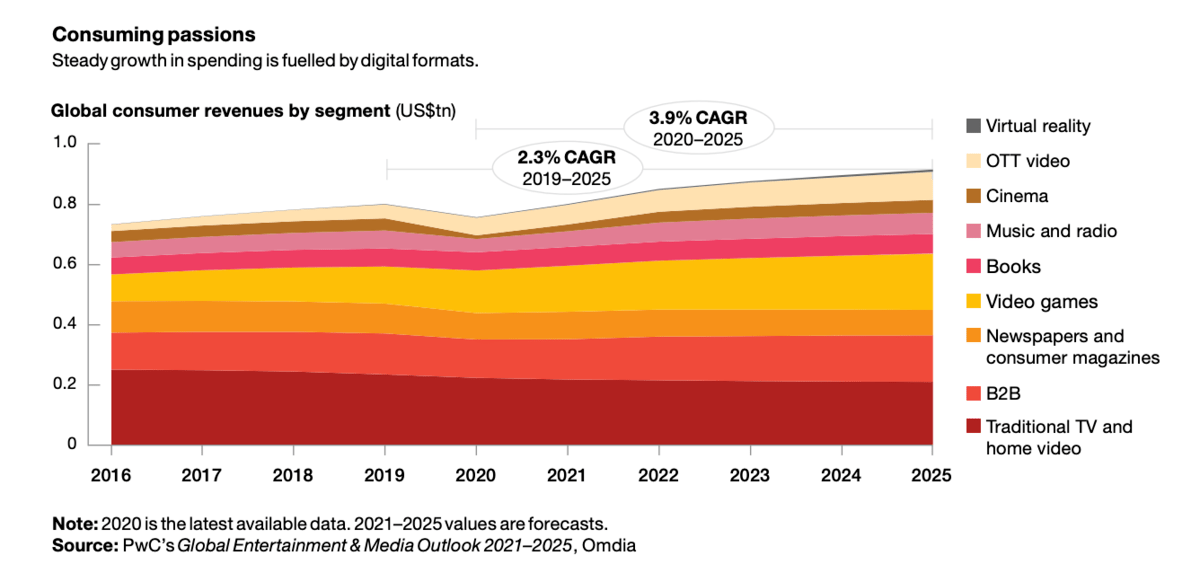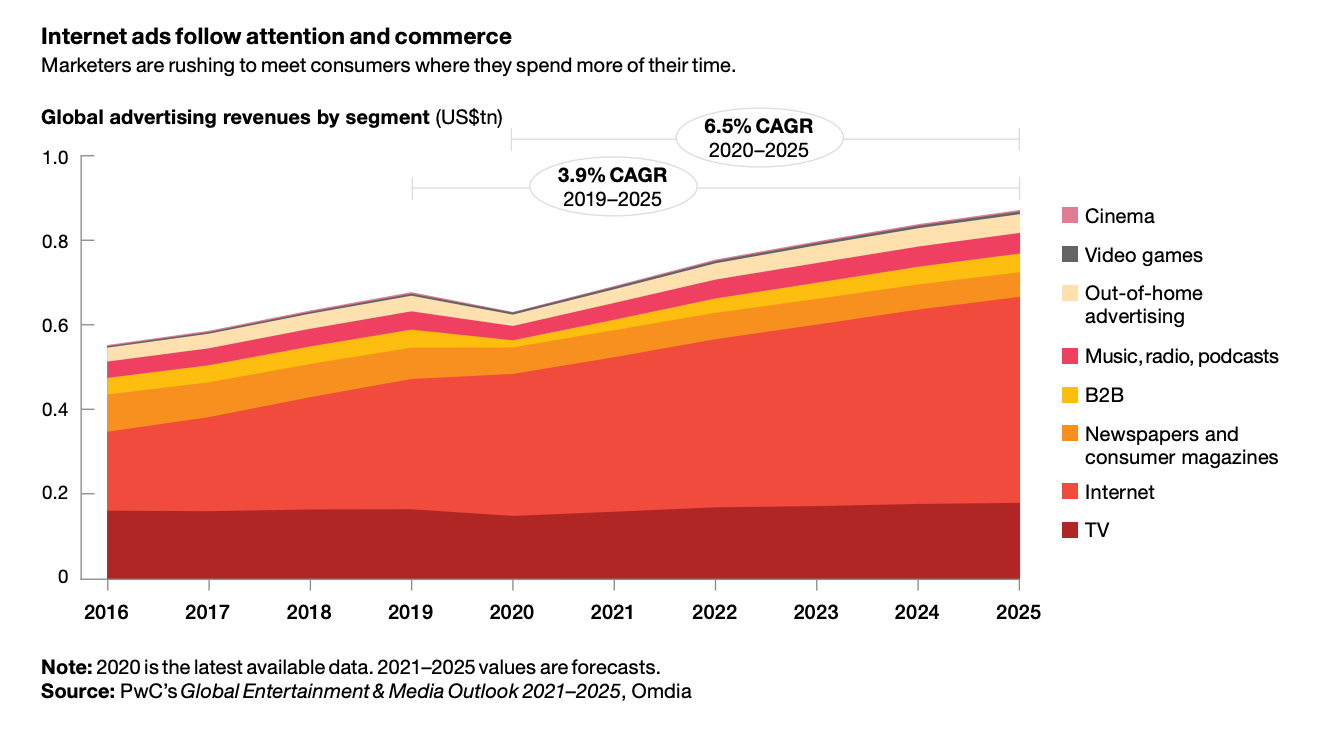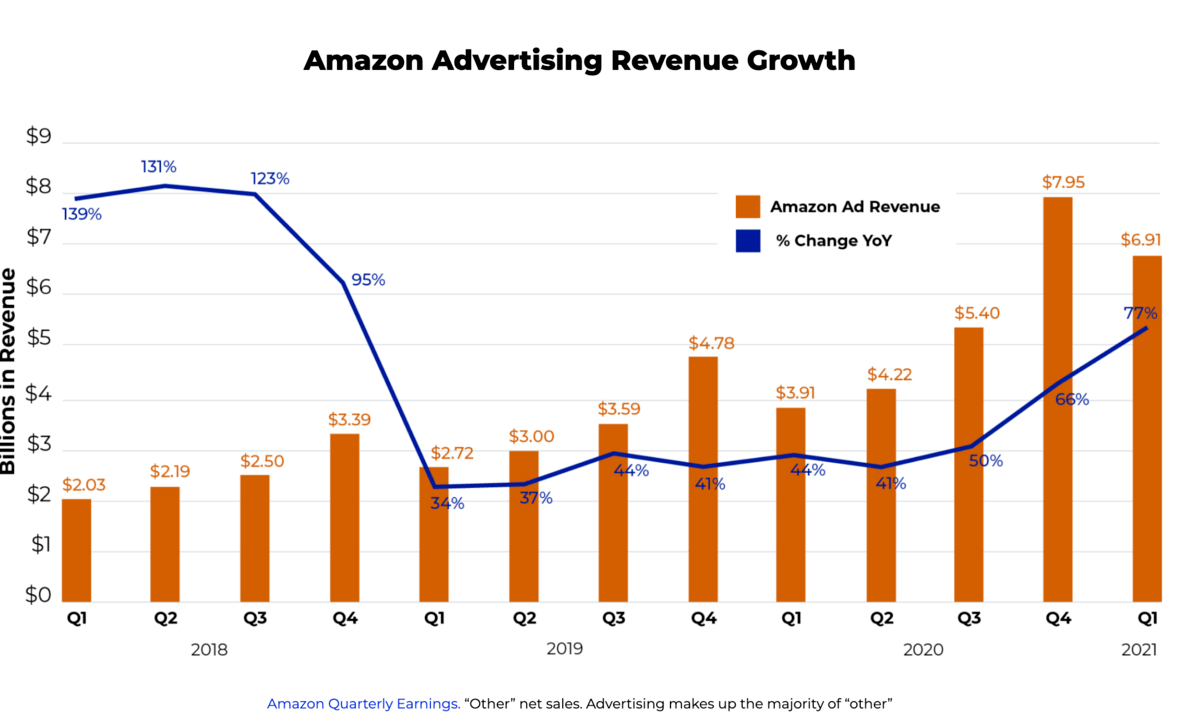More than ever, strategic allocation of the advertising budget is a key to business development. Not only has digital marketing proven to be a critical pivot to eCommerce, but the accelerated digital transformation also propels the demands for online ads. As a result, the need for effective ad formats is rising, and prices are likely to inflate.
To better formulate your advertising tactics, read the following highlights and insights of global ad statistics:
![]() Highlights of this article:
Highlights of this article:
- Why is eCommerce Advertising Important For Businesses?
Learn from the No.3 digital seller – Amazon - Good Consumer Experience is a Game-Changer
Convey the right message at the right time to the right target - The Power of Data to Create a Seamless User Experience
How you can customise and retarget customers by analysing their purchase data patterns
Content
Why You Should Care
The robust growth of global ad spending is unstoppable.
According to Zenith’s forecast, the YOY growth of global ad expenditure in 2021 will be 11.2%, mainly driven by performance-led eCommerce ads and online video ads. The biggest contributors are the US (46%), China (11%), Japan and the UK (6% each).
In addition, the upward trend is not expected to go into reverse.
In 2023, total global ad spending could reach US$731 Billion, recording an increment of 87% compared to 2010. It means that businesses should figure out effective advertising tactics to keep ahead of the game in these few years.
Ecommerce Boom & Internet Advertising
The migration of audiences from offline to online is apparent worldwide. Such transition happens across sectors – people switch from Cinema to Connected TV, from bricks-and-mortar sales to eCommerce.
It is no surprise that the shift to digital content services fuelled the growth in eCommerce and consumer spending in general.

Global consumption revenue by media type
Consequently, internet advertising is now marketers’ favourite to influence online shopping journeys. According to PwC’s Outlook, global spending on internet advertising recorded a 9% increment of US$28 Billion, reaching US$336 Billion in 2020. Most importantly, internet advertising will keep growing, with a CAGR forecast of 7.7% from 2020 to 2025.

Global advertising revenue by media type
Putting China Market in Perspective
In 2020, China’s internet advertising was worth US$74.8 billion, meaning that the market was the second-largest globally. The value is more than the rest of the APAC markets or the entire European market.
It is also intriguing that the China market has been very mobile-focused since a few years ago. With 990 million mobile internet users, the online audience base is the largest in the world. The display ad is the most preferred choice among all digital options, contributing to 73.7% of the mobile internet advertising revenue.
The advertising industry and the mobile app market still have room to stretch in China. In 2025, mobile internet users could hit 1.3 billion.
Brought to you by Velotrade, a marketplace for corporates to access financing.
Did you know that China overtook the US eCommerce market? Read more to gain deeper insights!
Case Study: Amazon as No.3 Digital Ad Seller
Let’s take a closer look at the continuous eCommerce boom and the giant.
More sellers are considering ad formats provided by the online marketplaces. Amazon is now reported as the No.3 Digital Ad Seller in the US. Its ad business growth was 4.5 times faster than Facebook and 63 times faster than Alphabet.

USA Ad revenue share of 3 eCommerce giants
Brands and sellers on Amazon are obsessed with the investment in pay-per-click (PPC) models and interest-based targeting options. As high as 75% of the sellers are using at least 1 type of Amazon PPC ad, and 34% of the sellers plan to increase the budget on Amazon ads further.
The rationale behind this tendency is the higher potential return on investment of reaching customers when they are ready to buy.

Surge in Video Advertising & Influencer Marketing
Here comes the ad industry spotlight of the year.
Online video advertising keeps soaring to be the fastest-growing digital channel in 2021, whereas the traditional television market continues to shrink. Zenith predicts the ad spending on video advertising could reach US$63 Billion, meaning a rise of 26%. Certainly, many brands are willing to allocate budgets to target people when they watch their favourite shows, movies, and videos online.
However, marketers should not ignore the fact that the landscape of online video is still under transformation. Given the popularity of subscription-funded video-on-demand, advertisers’ rising demand for high-quality online video available may lead to an inflation in media prices.
The giants are even jumping in the real-time streaming of massive events, e.g., Amazon secured Champions League rights in Germany for the 2021/22 season.

Industry Spotlight on Video Ads
Live-streaming & Influencers’ Potential
Live-streaming as one of the most trending ad formats, is way more potent than we thought. Here are some statistics and facts about live-streaming and self-generated video platforms:
- TikTok recorded a base of 1 billion monthly active users in 141 countries. In 5 years, they drew more than 1/8 of the world’s population to the platform.
- TikTok is running a creator marketplace in 40 countries to help brands partner with creators.
- By 2022, 20% of Chinese eCommerce will come from Live-streaming.
It is no news that influencer marketing has been part of the video advertising package. Yet, its power is remarkable at a time when more shoppers are shifting to online channels.
Over the past few years, these influencers have been producing digital content regularly to gain reputation and build trust with their audience. As a result, users worldwide now actively engage with KOL vlogs, daily routines, recipes, product testing, shop recommendations, and more.
At the same time, more young consumers are indifferent to traditional media.
As stated in previous reports, the viewership of the Academy Awards plunged to a new low of a mere 10.4 million. On the contrary, a young influencer Addison Rae alone has 85.6 million followers on TikTok. Undoubtedly, advertisers’ interest in traditional media is slowing down.

It makes perfect sense why large corporates are following trends on the live-streaming platforms closely, for the enormous opportunities to reach an extensive base of consumers.
What You Should know
Rising advertising expenditure is a market trend written in statistics, signalling the increasing competition in the field. When investing in ads, stressing the level of consumer experience and the branding message could bring entirely different outcomes. The cliche still applies; the devil is in the details.
Importance of Consumer Experience
Scrolling through social media, many people get used to advertisements as a part of their daily routine. It is precisely why consumer experience determines whether the ad is a game-changer or deal-breaker.
As the old saying goes, you want to be in the right place at the right time (and speak the right message in the right manner). How? Performing thorough user research and data analysis helps you decide the suitable ad message, type, and channel.
While platforms are getting sophisticated, it is crucial to master each channel’s unique styles and forms of engagement. A fundamental but often ignored fact: The same ad doesn’t work equally well on all platforms.
Discover how advanced technologies create immersive eCommerce experiences for users with increasing levels of interactivity.
Connecting through Branding
Besides fancy ad tech and aesthetics, the art of advertising lies in the crafting of messages.
Consumers are educated to make “informed choices” nowadays. They prefer brands holding similar personal beliefs – inclusiveness, transparency, sustainability, and so on.
Inevitably, sellers who manage to communicate their brand values effectively with customers have the edge over others in the intense race. On the other hand, the rest would be just some other replaceable choices.
The impact of branding is more than a one-off conversion. Bold and meaningful themes conveyed through online channels can lead to positive associations and thus long-term loyalty to your brand. Recently, emotional brand marketing campaigns have gained a position in video advertising.
![]() Key Takeaways
Key Takeaways
- Internet Ads Spending Increase with Rising Digital User Consumption
Positive growth projections for users migrating from offline to online purchasing channels make online advertising marketers’ favourite. - Amazon Ranks as the No.3 Digital Ad Seller
75% of sellers use at least 1 type of Amazon PPC AD, and 34% plan to increase their budget. - Video and Influencer Advertising is One of the Fastest-Growing Marketing Tactics
Many firms are trying to catch users’ attention while they watch their favourite influencers’ videos. - Rising Ad Spending Signals Increase in Competition
Whether your ad is a game-changer or deal-breaker depends on the experience you provide to your users. Brand values play a crucial role.
How You Can Achieve
Available options in the market could be overwhelming, but it is no harm to start from something small and replicate the success on a larger scale. The following suggests how you can begin the journey.
Data Analytics & Automation
Arguably, the most fascinating part of digital advertising is the feedback you receive. After launching a campaign, user interactions are recorded for further analysis, strategic adjustments of the ad campaign, and follow-up actions, e.g., retargeting, customer relationship management.
With current technologies, marketing automation can enhance the customer journey as a seamless experience across channels –an omnichannel strategy.
Based on the defined triggers (a specific action), corresponding messages can be automatically sent out to a customer segment(s).
Next, the team can retarget users across digital channels such as eDMs, in-app notifications, social media ads, and display ads by integrating the data sets and platforms.
However, it is a must to avoid the automation tool backfiring at your customer experience design. Thus, it is necessary to map the customer journey and test every possible scenario thoroughly. Moving on, with more feedback collected from campaigns, the settings of personalised touchpoints can be further adjusted.
As aforementioned, we pay attention to customer experience.
What if you don’t have enough capital to secure these digital tools? Financing can help! Even the process of eCommerce financing is automated through API integration.
Budgeting
An advantage of digital advertising is that brands can start from a limited budget and gradually scale up to a big above-the-line project. Testing is made possible under the setting – always begin early and carry your results for the more significant occasions.
Especially during the holiday peak seasons, merchants put immense efforts and resources into capturing consumers’ attention to their brands. Advertisers can tailor ad campaigns for new customer acquisition, member retention, sales-driven promotions, and brand awareness.
Budgeting is an essential part of your advertising campaigns to achieve satisfactory results. Success starts with proper financial planning. Understand how eCommerce financing works to secure working capital for your seasonal ad tactics.
Scalable
Digital
Secured
A digital solution to optimise your digital business.

